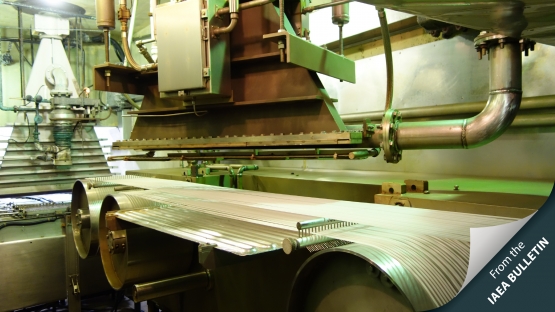Radiation, when used wisely and with the right safety precautions, can work wonders for our lives and the environment, making our world a safer, healthier and more secure place to live. If you look around, you will see ways radiation has touched your life too — from the energy shining from the sun to the hygienic food on your plate. Here at the IAEA, we work with countries around the world to help spread the peaceful use of radiation technology, including through the International Conference on Applications of Radiation Science and Technology (ICARST) that ended last week.
There are many different tools and approaches a country can use to meet its development goals and challenges, and for many countries radiation technology is increasingly becoming part of the solution. Indeed, it is recognized as one of the most environmentally friendly and cost-effective options. Its many applications make it well suited for the diverse work required for achieving the United Nations Sustainable Development Goals (SDGs) and their comprehensive set of targets, which range from health and the environment to industry and infrastructure.
Radiation can be used to break down living cells to treat diseases like cancer, fight harmful pathogens in food and sterilize surgical tools and medical supplies. Radiation can enable us to destroy pollutants in water, in the air and in the ground before they contaminate the environment. Other waste materials, such as bagasse — the fibrous matter from the sugar industry — or the shells of seafood such as prawns, can be tackled by using radiation technology to convert them into biodegradable and more eco-friendly materials, such as food packaging or high-quality nutrients used for farming. Radiation can also be used to join up and link molecules to make stronger, more sustainable cables and wires and create high performance materials and coatings that we use in our homes and cars and in industries worldwide.
We can even use radiation to help us ‘see’ the ‘invisible’ interiors of buildings and machinery to ensure they are still structurally sound and safe, especially after natural disasters. Every time you go to the airport you see an example of radiation technology in action, as officers scan people and baggage to ensure security. These are just a few examples highlighting how diverse the use of radiation technology can be.
To tap into the potential of radiation technology and science, countries require highly skilled professionals and the right equipment. Through IAEA support, many countries are able to get the necessary training and education courses, expert guidance and equipment they need to adopt this technology. Hundreds of scientists from institutes and organizations in both developed and developing countries also work together through IAEA coordinated research projects that advance scientific research. These projects often result in significant practical applications, many of which are then also included in the work done through the IAEA’s technical cooperation programme to transfer nuclear technology to where it is needed. This comprehensive support is important for many countries, particularly for low and middle income countries that face resource constraints.
Radiation technologies have tremendous potential to help in improving the lives of people and boosting the industrialization and development of countries worldwide.






